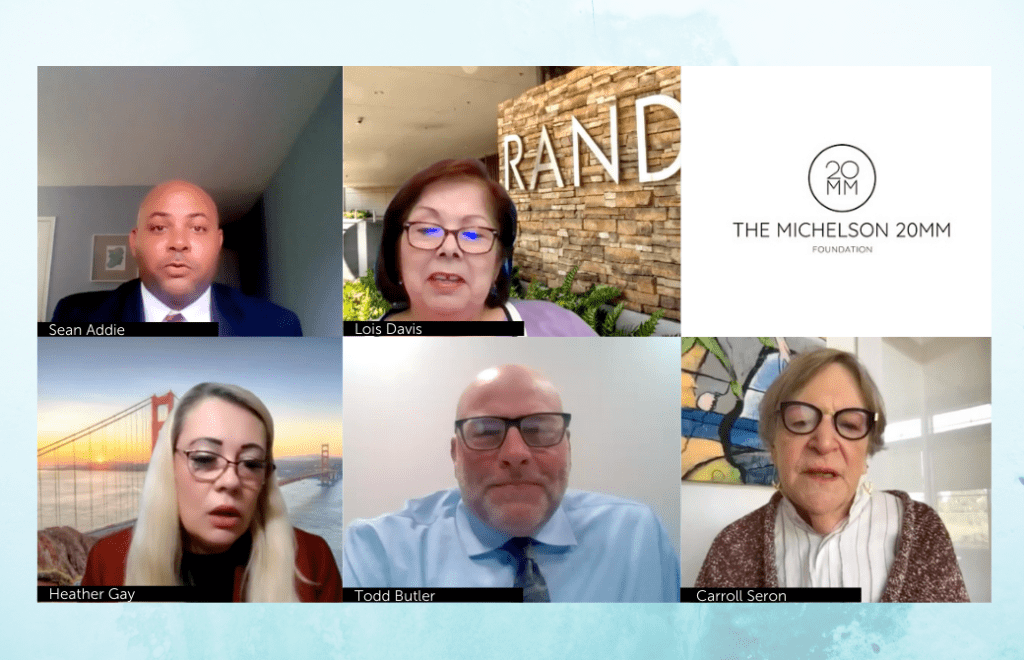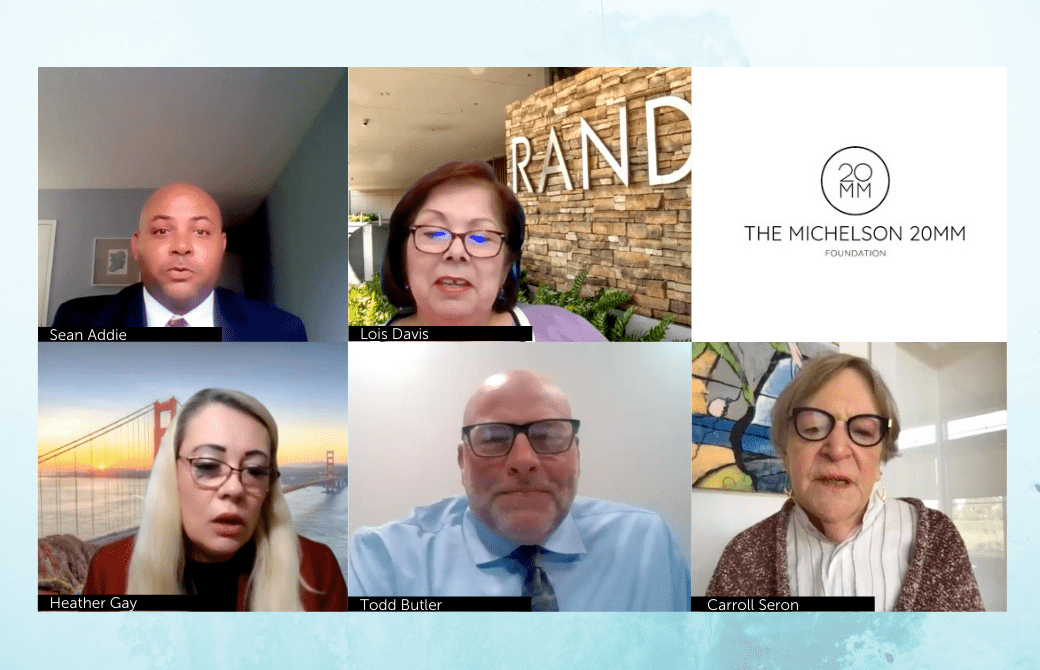On September 16, 2021, the Michelson 20MM Foundation and the RAND Corporation hosted a panel of diverse experts in the field who discussed RAND’s guide and shared the experience of government, corrections officials, higher education professionals, and researchers.

“In-prison college does more than transform prisoners into serious students. It offers hope, and it alters the trajectories of prisoners’ lives.” – Dr. Gary K. Michelson
“These [higher educational] programs should be a partnership, an equal partnership between colleges and prisons…they’re bringing together two very different bureaucracies with different missions, visions, and values to establish these programs; thus, it requires an agreement on goals, the commitment of resources, and a clear set of expectations.” — Dr. Lois Davis, RAND Corporation senior policy researcher
This article was published on 20mm.org. Read more here.
Corrections and Education Unite to Create High-Quality College Programming in Prison
Many people can relate to the experience of having a stroke of brilliance over lunch with a friend, but few of us act on an idea that has the potential to transform the lives of over two million people. That, however, is what happened to the late John Linton and Dr. Lois Davis as they contemplated what needed to happen next in the field of in-prison postsecondary education over lunch in Maryland.
“These [higher educational] programs should be a partnership, an equal partnership between colleges and prisons…they’re bringing together two very different bureaucracies with different missions, visions, and values to establish these programs; thus, it requires an agreement on goals, the commitment of resources, and a clear set of expectations,” Dr. Davis, senior policy researcher at the RAND Corporation said, recalling John’s view.
In addition to the need to approach these programs as a partnership, John identified a gap in the field: Many resources existed for colleges to implement in-prison programs, few resources were available for corrections officials to implement or support such programs. That is how “What Corrections Officials Need to Know to Partner with Colleges to Implement College Programs in Prisons” was born, a Michelson Spark Grant–funded guide.
On September 16, 2021, the Michelson 20MM Foundation and the RAND Corporation hosted a panel of diverse experts in the field who discussed RAND’s guide and shared the experience of government, corrections officials, higher education professionals, and researchers.
The Landscape
Dr. Davis began the event by underlining the importance of a degree in today’s economy and by providing a common understanding of the history and landscape. Six years ago, in 2015, the Department of Education implemented the Second Chance Pell Experimental Initiative, which provided grants to colleges in 42 states. Second Chance Pell was the first time since 1994 that Pell Grants could be used to help pay for in-prison college programs by colleges that participated in this initiative. Importantly, at the end of 2020, Congress reinstated Pell Grants eligibility for all incarcerated students in every state. This is expected to spur the expansion of higher education programs in prison.
Pell Grant reinstatement presents tremendous Return On Investment (ROI) for taxpayers, while simultaneously increasing public safety and improving the lives of formerly incarcerated individuals. The RAND Corporation found that those who participate in educational programs while in prison experience a recidivism rate that is 13 percentage points lower than those who do not pursue an education. Furthermore, those who participate in college programs were found to be half as likely to recidivate.

